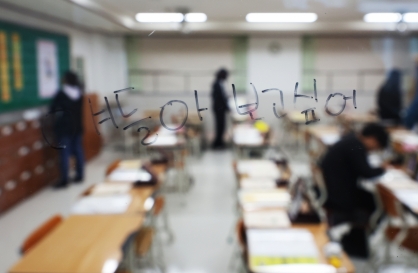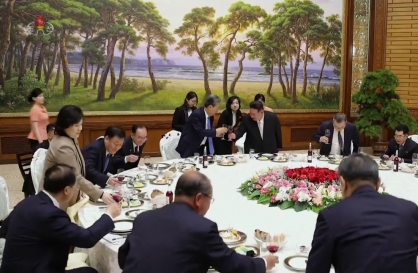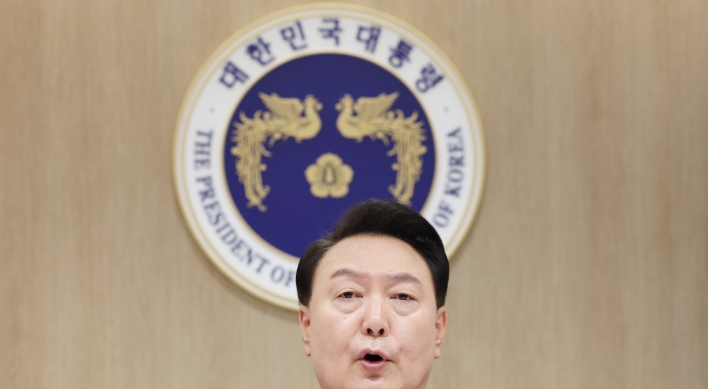[Eye] ‘Art is necessary in the process of becoming a citizen’
MMCA Director Mari talks about engaging Korea’s modern art with the world
By Rumy DooPublished : May 19, 2017 - 11:18
At the Deoksugung branch of the National Museum of Modern and Contemporary Art, Korea, an exhibition of Egyptian surrealist art is underway in the west wing that was added to Seokjojeon, the country’s first Western-style building, in 1938 during the Japanese colonial period.
It is coincidence that the period covered in the exhibition runs from 1938 to 1965. But nevertheless, the venue seems an apt one for the exhibition that covers a period in Egypt soon after it became fully independent from colonial power.
To most Koreans, Egyptian modern art is an unfamiliar terrain. So why Egypt?
“I believe that one of the main tasks of museums like us is to investigate the meaning of what does modernity mean, in our case, modern art,” said Bartomeu Mari, director of MMCA, at an interview with The Korea Herald on Tuesday.
One way to answer that, he explained, is to look at expressions of modernity beyond the traditional centers of power, mainly central Europe and North America. “When Art Becomes Liberty: Egyptian Surrealists (1938-1965)” is an example of an exhibition that deals with important, yet unknown expressions of modernism, Mari said, before declaring, “MMCA would like to rewrite the canon of modern art.”
It is a lofty goal for Mari who has a three-year mandate, which can be renewed, at the museum.
It is coincidence that the period covered in the exhibition runs from 1938 to 1965. But nevertheless, the venue seems an apt one for the exhibition that covers a period in Egypt soon after it became fully independent from colonial power.
To most Koreans, Egyptian modern art is an unfamiliar terrain. So why Egypt?
“I believe that one of the main tasks of museums like us is to investigate the meaning of what does modernity mean, in our case, modern art,” said Bartomeu Mari, director of MMCA, at an interview with The Korea Herald on Tuesday.
One way to answer that, he explained, is to look at expressions of modernity beyond the traditional centers of power, mainly central Europe and North America. “When Art Becomes Liberty: Egyptian Surrealists (1938-1965)” is an example of an exhibition that deals with important, yet unknown expressions of modernism, Mari said, before declaring, “MMCA would like to rewrite the canon of modern art.”
It is a lofty goal for Mari who has a three-year mandate, which can be renewed, at the museum.
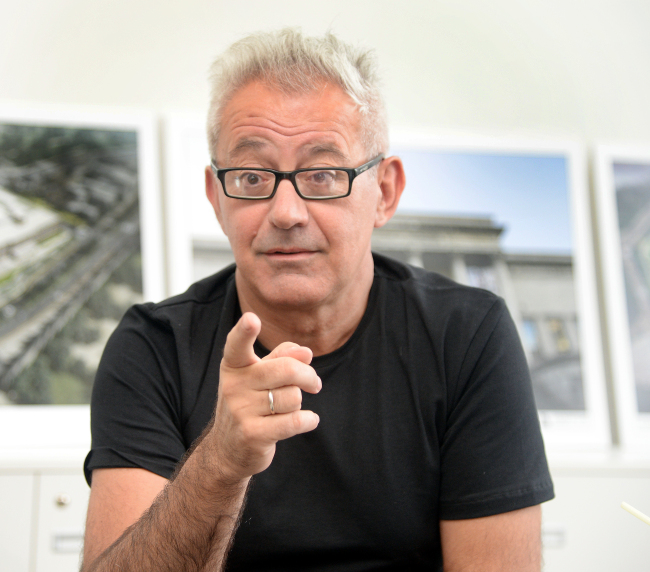
When the National Museum of Modern and Contemporary Art, Korea appointed Mari its new director in December 2015, it caused consternation among many in the art crowd. It was the first time since its establishment in 1969 that a foreigner had been made the chief of the state-run museum. Some raised concerns that a non-Korean would not be up to the task of managing the large institution -- it is one of the largest in the world when all three museums in Gwacheon, Deoksugung and Seoul are combined. Others questioned whether a foreign director was required to bring about innovation to the oldest museum of modern art in Asia.
Mari inevitably draws close scrutiny from the media and his decision to exhibit the controversial “Beautiful Woman,” attributed to Chun Kyung-ja but which the painter denied as being her work, received wide coverage. “It has been getting positive response from the public,” said Mari who stands by his decision to show the work to the public for the first time, despite objections by the late painter’s family. “Beautiful Woman” is part of the museum’s collection.
“The work needs to be displayed. There is no reason to hide it,” he said, adding “I have no objective reason to believe it is not authentic.” At the Gwacheon branch exhibition, the painter of “Beautiful Woman” is not identified. Instead, there is an extensive explanation of the controversy surrounding the painting.
When two major exhibitions scheduled for this year and next year were canceled or postponed due to budget reasons only a few months after their announcements, Mari’s leadership at the MMCA was questioned. However, such attacks do not seem to perturb Mari. He spent much the interview articulating his vision for MMCA.
At the end of the year, there will be an exhibition that looks at how modern Korean art has represented women and femininity. “‘Arrival of New Woman’ is important because we’ve never explained enough the evolution of women in contemporary societies,” said Mari. The exhibition would examine the evolution of the representation of gender, he said, adding, “This is a way to link art with social and human issues that are of high relevance. This will also make Korean art part of global conversation and connect with intellectual debates globally.”
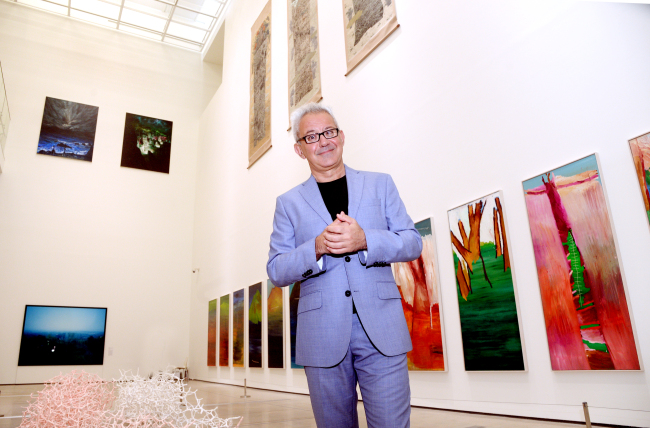
Making Korean art part of the global dialogue seems to be Mari’s main focus at MMCA. “Korean art is in the world more than ever,” he said. He had just returned from the Venice Biennale the previous day where, he said, the Korean pavilion showing works by Cody Choi and Lee Wan was selected as the top national pavilion by several media.
“We need to put major Korean artists of the second half of the 20th century with (the) rest of the world,” Mari said. Lee Seung-taek’s land art from the late 1950s to late 1970s could be linked to the current preoccupation with global climate change, for example.
Mari also pointed to a generation of young painters in their 30s to 40s, who are investigating the notion of the narrative image.
In an effort to put Korean modern art on the global map, Mario plans to partner with first class international institutions for exhibitions and seminars. An area that he would like to examine is how traditional calligraphy connects with abstract painting. Another aspect of Korean modern art that interests him is how Korean modern art does not exclude figurative art and does not embrace abstraction as the main language, as is the case in the West. In fact, it maintains a tension between the two.
Mari has set a number of priorities for MMCA and chief among them is developing long-term research projects. However, Mari emphasized that an assurance of continued support is necessary for this to be realized. “I would like to make an agreement for continuity of government support for the museum. We need to think that there would be continuity,” he said. At the same time, MMCA should be proactive in generating revenue and economic support, Mari acknowledged. “Collaboration between public, private and institutions can be created. Others have been doing this for more than 20 years,” he said.
To those who argue that art is frivolous luxury, Mari has a very clear message. “Culture is not the privilege of the rich, it is necessary for every citizen, individual in the process of becoming a citizen,” he said.
He asked to consider how much culture contributes toward the GDP. “Museums should play a role. We may be central to not only education but also to the use of cultural products. Museums play (a) central role in the development of tourism,” he said.
“I want to put a skin to the museum. Skin is what allows you to have tactile experience. We need museums to be touched by the users. Then will be able to touch back. Art is not only intellectual but also sensual,” he said.
How about those who find modern and contemporary art difficult? This is where the educational role of museums steps in, helping people learn the codes that will allow them understand. “Museums have education departments that can help people read and interpret what seems incomprehensible,” Mari said.
On the question of what prompted him to leave his familiar ground in Europe and head to Korea, Mari said he was ready for “another context.” “Korea has the most sophisticated and attractive art scene. It was attractive enough for me to come,” he said.
“Korea believes public culture is relevant. I like that idea and I would like to contribute to that,” he said. “I hope the government never loses the idea that public culture is central to Korean identity. I hope we will deserve the public support and other sources,” he said.
By Kim Hoo-ran (khooran@heraldcorp.com)


